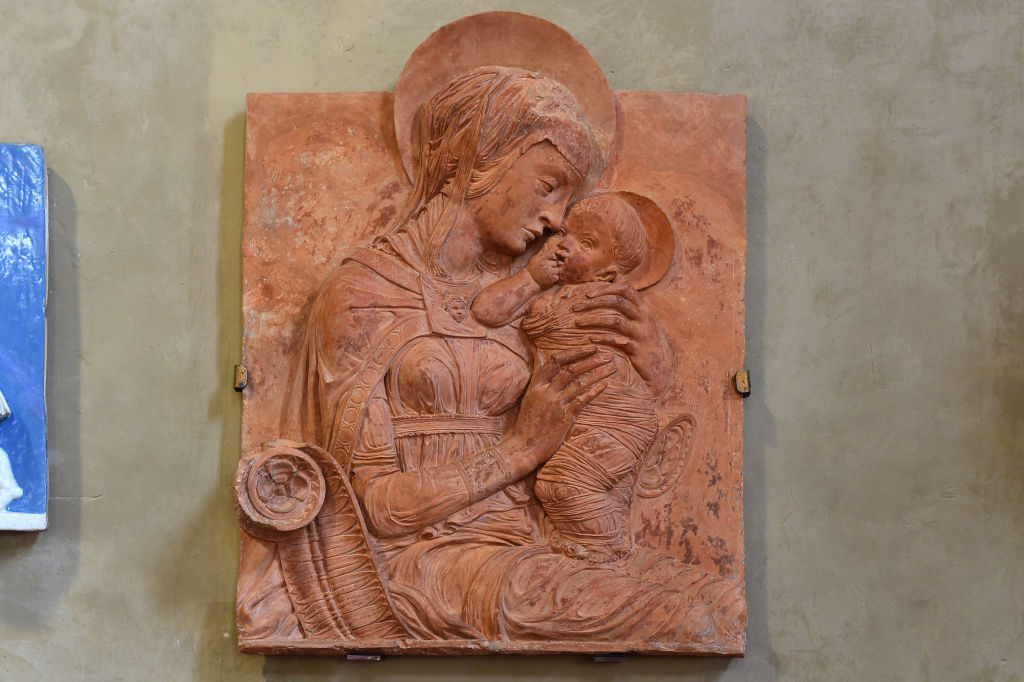
For 600 years, a terracotta bas-relief of the Virgin Mary by the Renaissance sculptor Donatello looked down over the residents of Florence from its perch on the facade of 38 Via Pietrapiana. In 2021, it was acquired by Italy for the city’s Bargello Museum for the hefty price of €1.2 million ($1.3 million). A replica now hangs in its old spot.
“An image of exquisite charm, the Madonna of via Pietrapiana shows all the expressive power of Donatello’s sculpture and his constant genius in the invention of details,” commented the Bargello’s curator Ilaria Ciseri.
The public artwork, which was produced around 1450–55, managed to withstand the elements and the threat of theft for centuries without drawing too much attention, and its attribution was only asserted for the first time in 1986 by the British art historian Charles Avery. It is believed to have been the original model from which Donatello carved several Madonna reliefs. One gilded terracotta version is held by the V&A Museum in London and another in marble is at the Bode-Museum in Berlin.
The original hung just around the corner from the Bargello, which houses several of the master’s most famous works including David and St. George in its Salone di Donatello. The Madonna was first exhibited there as part of an exhibition in 2009, where it was contextualized within the wider transformative achievements of Renaissance sculptors working in Florence in the 15th century, such as Luca della Robbia and Nanni di Banco. This was also the occasion when Avery’s attribution was confirmed by another art historian.
The Madonna was also the last Donatello to be in private hands. It was declared to be of national cultural importance in 2011 so when it came up for sale in 2021, Italy’s ministry of culture was able to exercise its pre-emption right. This means the nation has the first right of refusal before a piece of cultural property is exported out of Italy. The work was acquired for €1.2 million ($1.3 million), making it one of the state’s most significant purchases in recent memory.
Antonella Ranaldi, Florence’s superintendent for Archaeology, Fine Arts, and Landscape, noted that the pre-emption right is not often exercised by Italy. She credited the museum’s director Paola D’Agostino for jumping at the opportunity to buy the precious work.
“Among the tasks of a museum, there is the preservation of the works housed, public display, expanded accessibility, but also, not to be forgotten, the augmentation of its own collections,” she said. “As was done in this case through a targeted and challenging purchase for the benefit of an important museum.”
More Trending Stories:
How an Exclusive NYC Cult Influenced the 1970’s Art Scene
A Rare Soulages Lithograph Possibly Worth $30,000 Sells For $130 in Facebook Marketplace Mishap
Masterpiece or Hot Mess? Here Are 7 Bad Paintings by Famous Artists
Is There a Hat Better Than Napoleon’s? We Rank Art History’s 5 Most Iconic Chapeaux